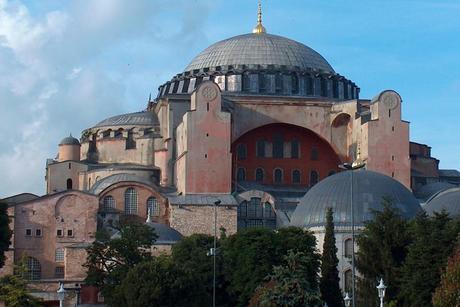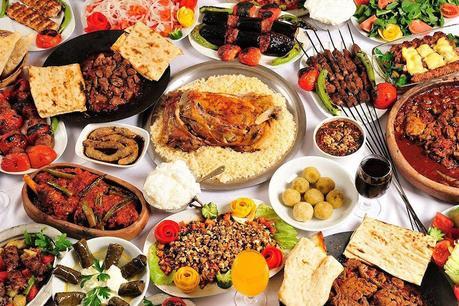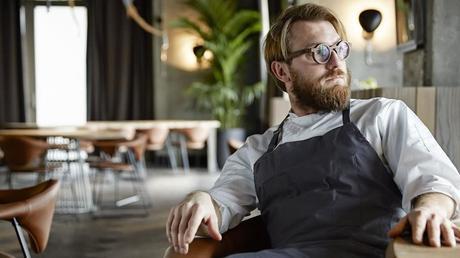Kemal Demirasal transcends sports to culinary arts and settles in Alancha, Istanbul to serve 12,000 years of culinary history of Asia Minor (Turkey) to curious guests with his praise-worthy meals
Kemal Demirasal is a 6-time national windsurfing champion who has recently retired and then decided to become a self-taught chef. Yes, you heard it right. He switched careers from being a sports athlete to a food artist in the culinary arts, for which there are absolutely no connection between these careers, except maybe the art of doing it (windsurfing and cooking). Although his career transcendence is neither an obvious nor an easy one, it only goes to show that the man’s talents knows no limits. Before Turkey was established as a country in 1923 cavemen Neanderthals lived there around 9,000 – 10,500 B.C. and archaeologists found out that these hunter gatherers were actually omnivores and ate porridge (previously thought to only ate meat from animals they hunt).
Even in the Upper Paleolithic period people have started to learn how to cook (or perhaps they’ve always known it all along and we just didn’t know about it). Later on the Sumerians occupied Mesopotamia and the Indus Valley civilizations sprouted in Pakistan; however, Turkey became a familiar crossroads when these civilizations opened trade routes into Europe and North Africa, particularly in Egypt.

Around 1,900 B.C. the Hittites settled in the land and their exploits were even mentioned in the Bible, then the Phrygians, Lydians, Persians also made this land either their Empire’s capital or turned it into a province (the fabled city of Troy was also found in Turkey; however, there are no evidence of writing or their way of life, so it may be that they shared the land with the Hitties or ruled a majority of it during their time). Further down into time the Roman Empire conquered it, then the Byzantine Empire came next, the Greeks, the Ottoman Empire also took possession of it until finally, it now became Turkey in the modern day. With this rich history one can surely tell that the delicacies of the ages past that had mixed with other dishes from other cultures will most likely form countless more cuisines which will certainly be eternally blissful to our senses! And with Kemal being a native of Anatolia, he most certainly is aware of this fact which must have been the reason why his passion for the culinary arts also abounds. His chefdom is starting to gain traction and, in fact, he has already opened 2 restaurants in 4 years since he started being a chef.
What we expected vs. what we got with Kemal’s take on the culinary arts Turkish style
We’ve decided to sample Demirasal’s Alancha menu to see for ourselves if he really deserved all the hype that he’s got in the area of culinary arts or was it all just residual fame from his former lifestyle as a professional athlete. We were greeted with an infrastructure that reminded me of the Louvre Museum in France, except that it was illuminated by soft amber lights from the inside. The restaurant itself is located on the lower floors of the Maçka Armani Residence, where guests can first enjoy a pre-meal cocktail in the vibrant atmosphere created by a live DJ. After the first course meal we were given several courses more which I can only describe as a “heavenly experience” as we were also entertained by the scenic view of the Bosphorus River while we dine at the terrace of the restaurant.
Kemal’s idealistic patriotism led him to create a menu style that exclusively showcases the country’s culinary history for which he called, “The Big Migration.” Alancha is the first and only restaurant to ever come up with this type of menu. The menu includes local favourites as well as ancient cuisines spanning the breadth of Europe, Asia Minor (Turkey) and all the way through the Middle East and some parts of Pakistan and India. Here are some of the highlights on it:

- Lahmacun (often described as Turkish pizza)
- Pişi (fried dough breakfast snack)
- Persian-style Yahni (meat and onion stew)
- Phoenician-inspired sea bass, and a grilled “Greek salad”
- Midye dolma (rice-stuffed mussels)
- Söğüş (a popular lamb’s head “hangover” snack)
- Antep pistachio
Alancha restaurant is so specialized with their delicacies that a member of the kitchen staff would hand-deliver each course while he/she provides historical references and explains the inspiration behind each dish. So you won’t be just enjoying the ambiance like you would in a normal albeit expensive restaurant, but you also learn a thing or two about Turkey’s place in history.
Alancha will inspire many people to showcase their own historical culinary arts and Kemal Demirasal will go down in history as a genius who proved he could do anything with his talents

Having been treated as both a tourist and royalty in Alancha I can only say that Kemal’s endeavor in the culinary arts, especially the historical side of it, is an enthralling experience that I haven’t experience in any other restaurant the world over. Even though Alancha is not world renown yet, I can bet that in the span of 2-3 years time it will be. It’s getting a lot of attention from the local and international media even as I write this blog post. It’s just a matter of time before its fame catches on!
